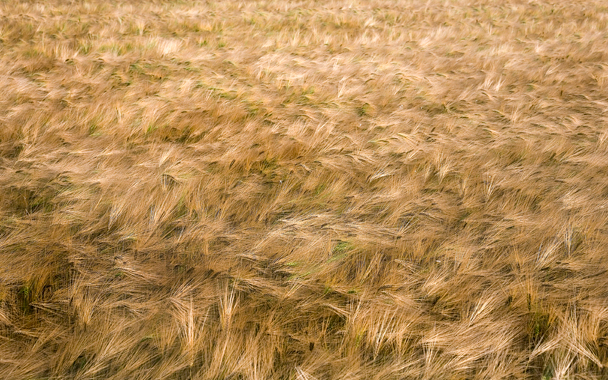Wes Jackson’s now-grown children used to call him Dr. Doom. Kids will be kids, but that seems to be a particularly inappropriate moniker for a man with a keen mind and an impish sense of humor, who is putting the final touches on a once-far-fetched mission to radically improve the way our most important food crops are grown.
Jackson, a plant geneticist, is president of The Land Institute, a Kansas-based research organization dedicated to improving the sustainability of farming by mimicking natural models. In an address at the Monterey Bay Aquarium’s Cooking for Solutions Sustainable Foods Institute earlier this month he said that he was within a decade of introducing a commercially viable variety of perennial wheat (meaning that one year’s crop will spring from the previous year’s root system without being replanted) to the market.
And to prove that perennial wheat is no longer a theoretical entity, he brought several small bags of flour made from his experimental plantings.
Jackson tends to think across a broader time horizon than most environmentalists (he promised not to go all the way back to the Big Bang during his 30-minute talk but did start at a point 3.5 billion years ago; he has also espoused 50-year Federal Farm Bills, as opposed to the current five-year legislation). Jackson said that about 10,000 years ago, when the first grains were domesticated, early farmers (“the greatest revolutionaries who have ever lived”) took a wrong turn by cultivating annual crops that die after one growing season and have to be replanted from seed. They gave plenty of grain, but at a tremendous cost to the soil—a problem that continues today on the American plains, where topsoil has been depleted and crops depend on massive inputs of chemicals and irrigation water.
That’s because annual crops have tiny root systems that grow for one season and then die along with the rest of the plant. Perennials, on the other hand, invest in huge root systems that last for years and burrow deep into the ground to secure water and nutrients. They produce more living matter over a much longer growing season than their annual relatives, and perennials prevent soil erosion because the land they grow on doesn’t have to be cultivated every spring.
Jackson brought two striking visual aids to the conference to show the difference in root structure. Annual wheat had a few spindly tendrils of rootlets, not much more impressive than some of the plants I weed out of my garden. Its perennial relative had developed a massive snarl of roots that stretched for several feet across the back of the auditorium. By crossbreeding annual wheat, corn, sunflowers and sorghum with their wild, perennial counterparts, Jackson and the Land Institute have developed crops that combine the yield of annuals with the sustainability of perennials. “Conservation becomes a consequence of, not an alternative to, food production,” he said.
“In reality, we are grass seed eaters,” Jackson added, pointing out that 70 percent of our calories come from grains and legumes. Thanks to his work, over the next couple of decades we might become perennial grass eaters.
(Speaking of Dr. Doom, I sometimes feel like the good doctor myself when I write about conferences such as Cooking for Solutions. But this year’s gathering was marked by a surprising number of hopeful glimmers. Sam Fromartz—sometime Gourmet contributor, author of the book Organic, Inc., and keeper of the blog Chews Wise—wrote an engaging post on the high points. Read it now, or save it for when you’re feeling depressed about the environment’s future and need a pick-me-up.)




 Pinterest
Pinterest


